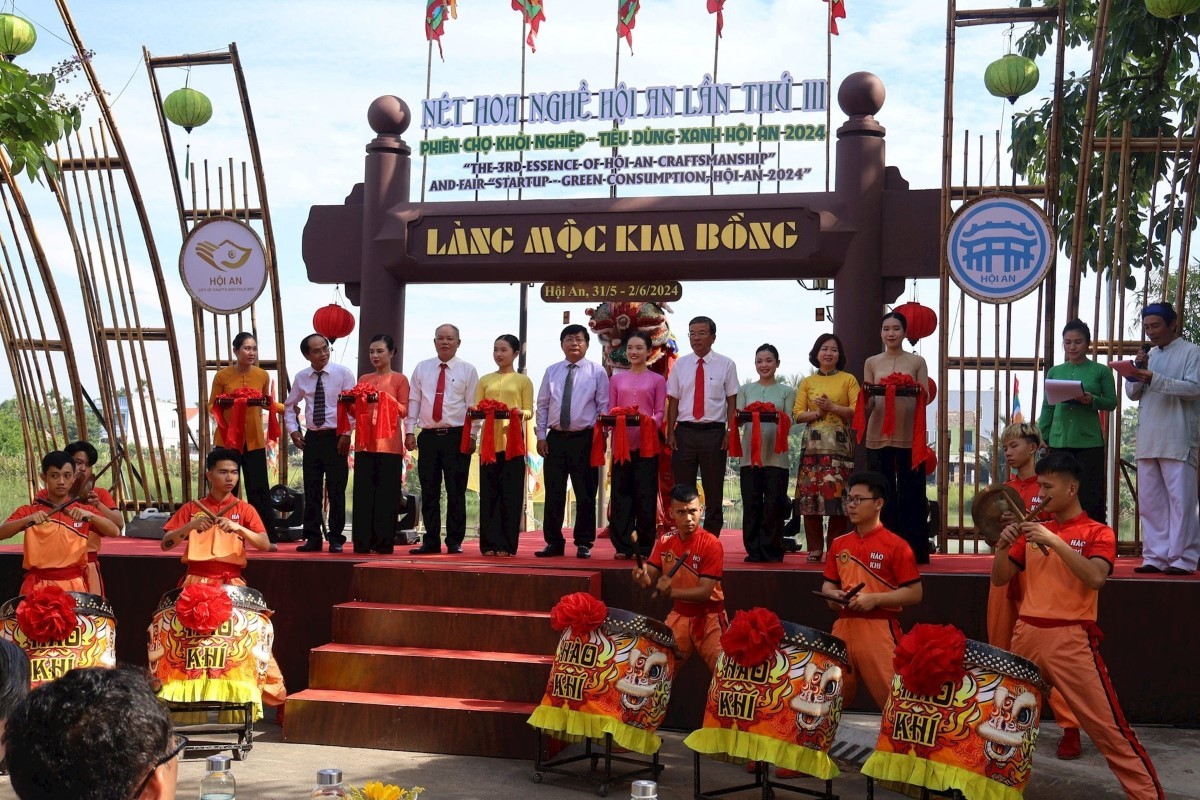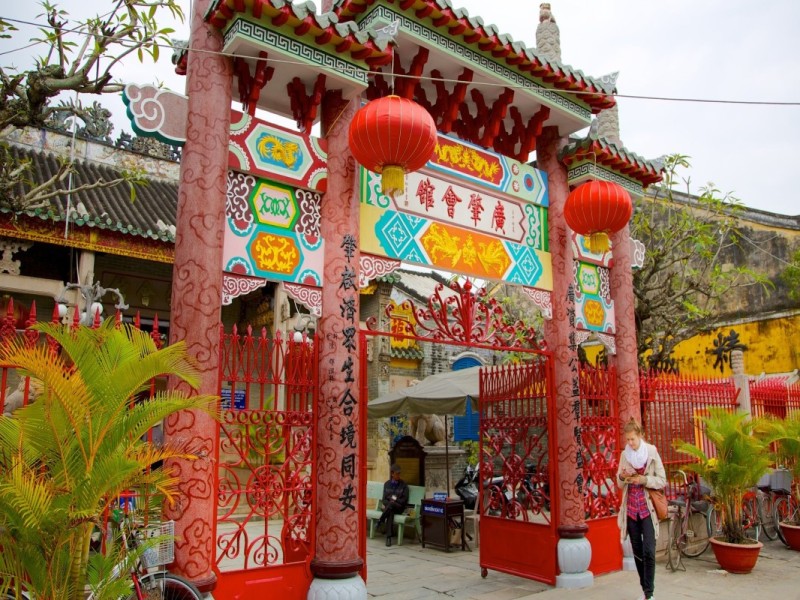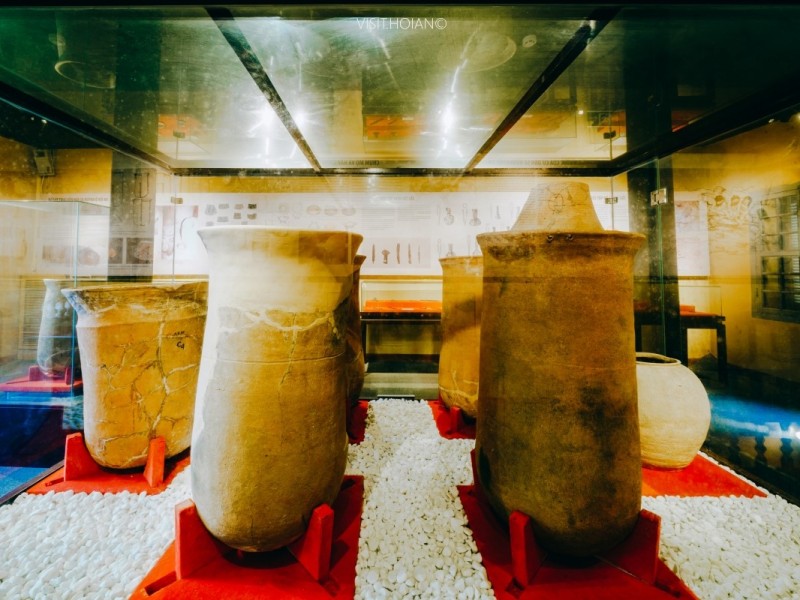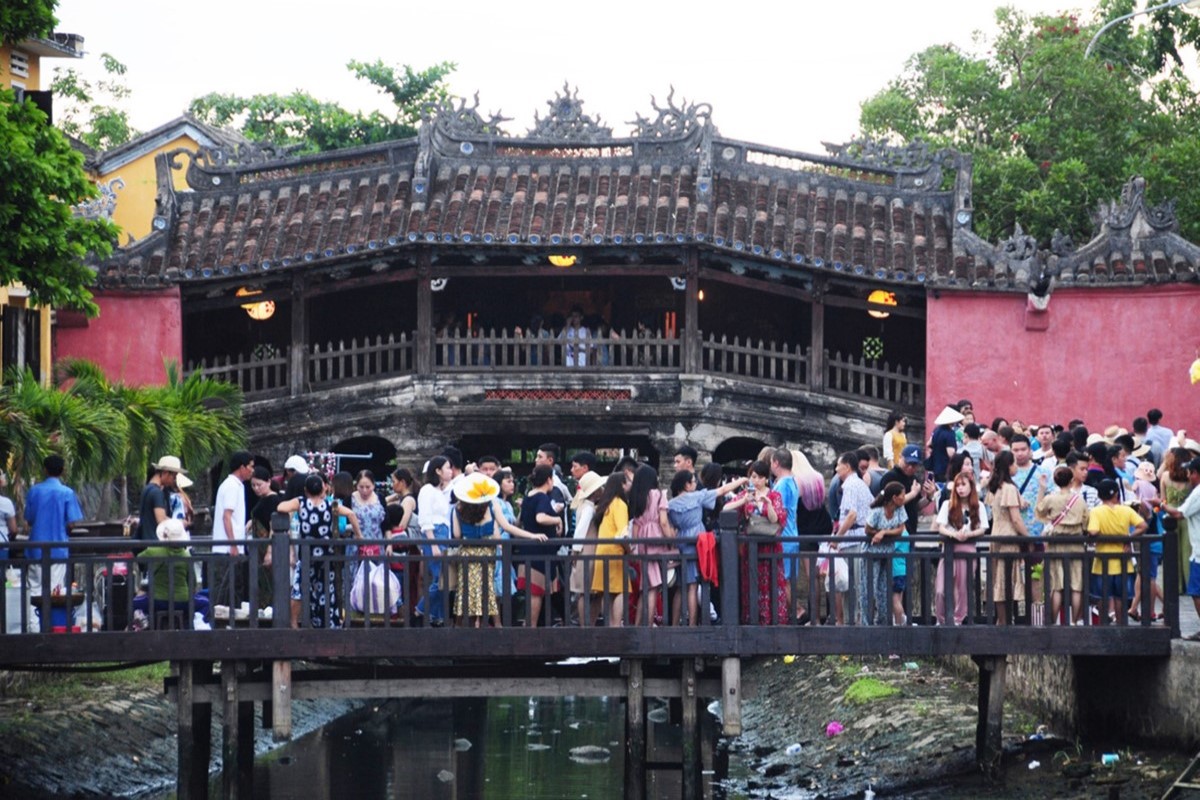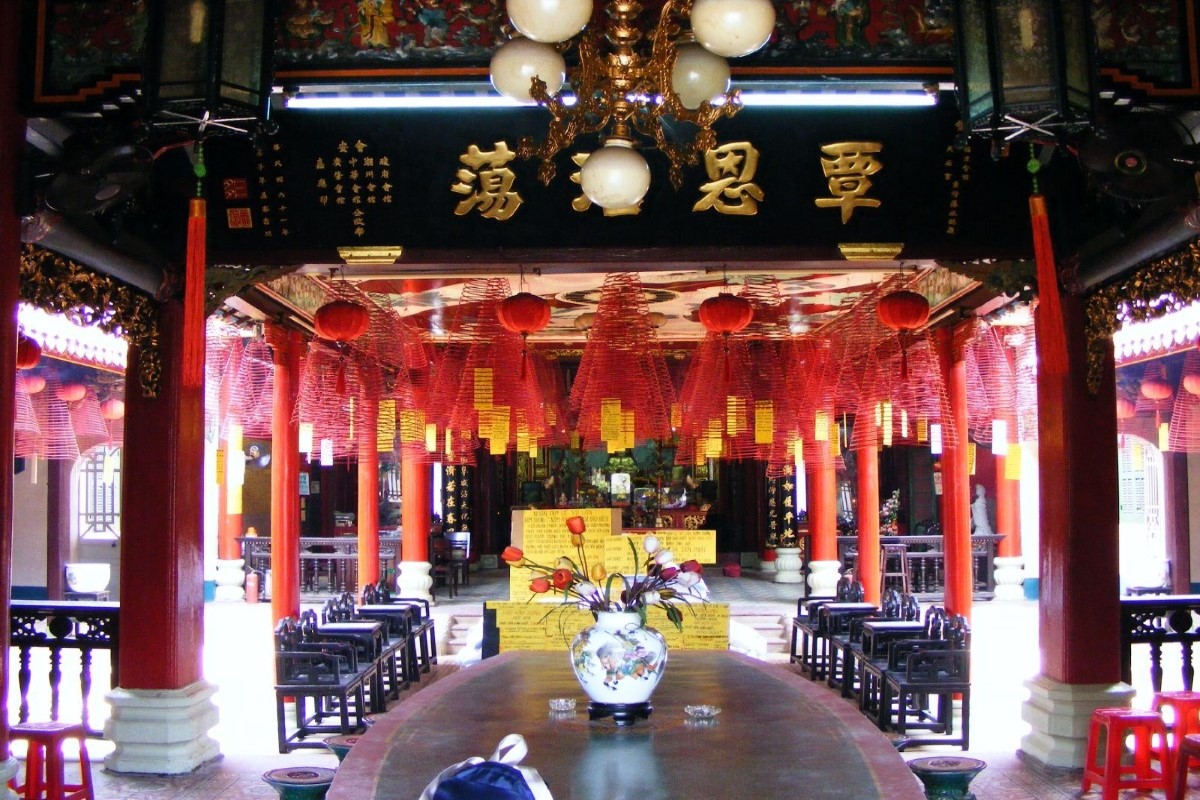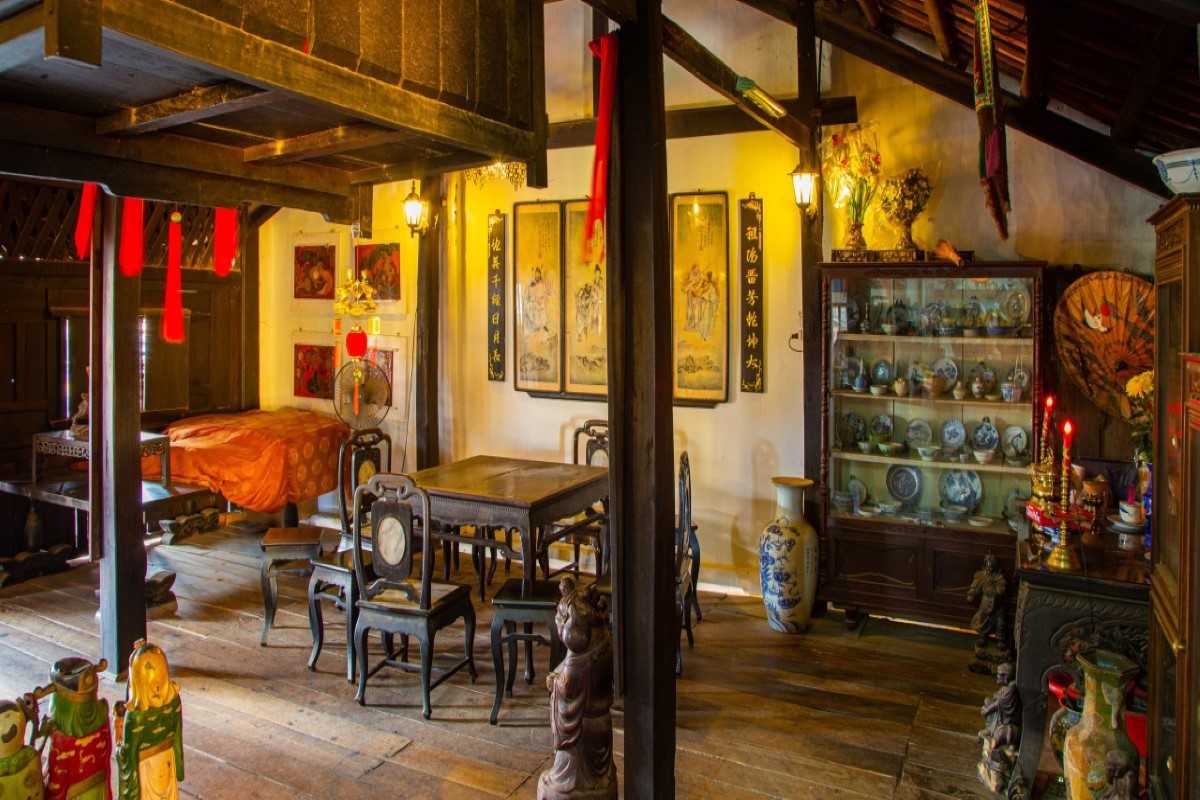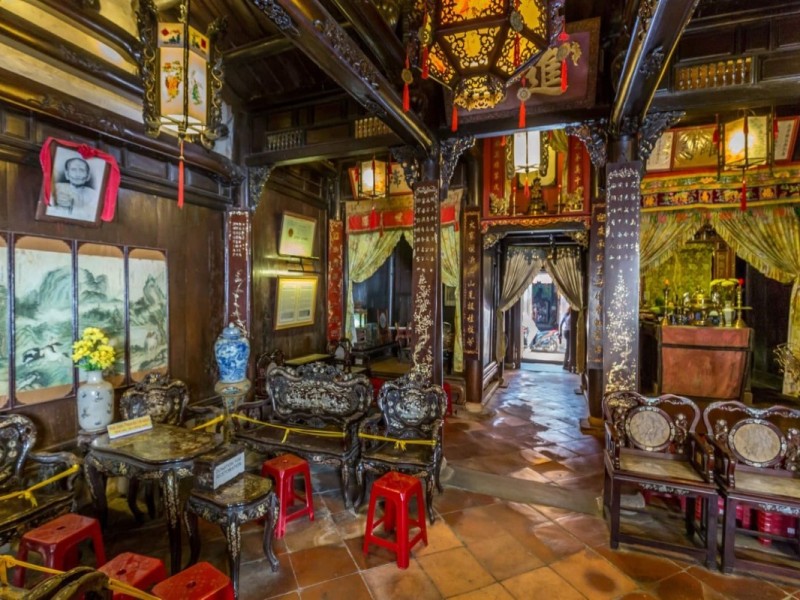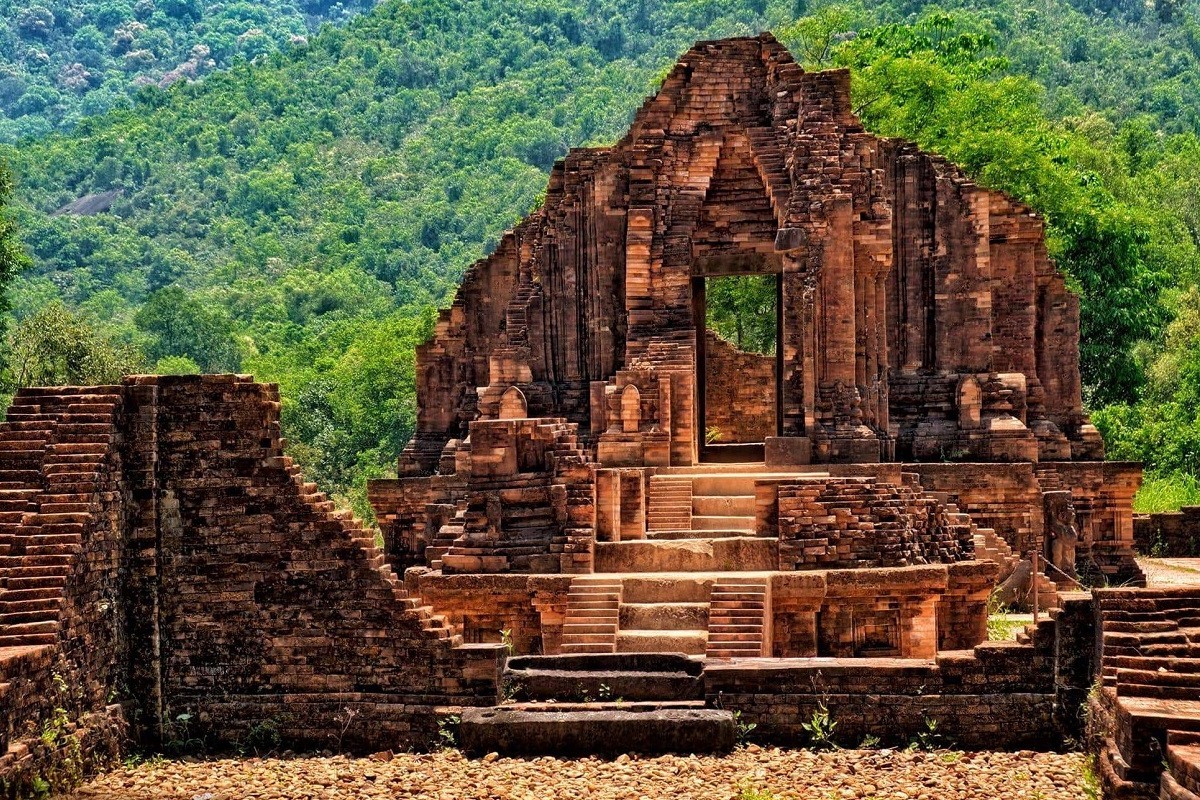Chuc Thanh Pagoda Hoi An: Explore the Timeless Spirituality
In the heart of Hoi An, a city renowned for its ancient charm and cultural treasures, stands Chuc Thanh Pagoda, the oldest Buddhist temple in the area. Founded in the late 17th century by Zen Master Minh Hai, this pagoda has become more than just a monument—it is a sanctuary for both locals and visitors seeking spiritual fulfillment and a connection to Vietnam’s rich Buddhist traditions. As you wander through the moss-covered gates and quiet courtyards, you’ll feel the history of centuries past, where Buddhist teachings have shaped the lives of those who have worshipped here.
But what makes Chuc Thanh Pagoda truly unique? Is it the intricate carvings that blend Vietnamese craftsmanship with Chinese artistry? Or perhaps it's the serene meditation spaces that invite quiet reflection amid the chaos of modern life? For travelers seeking a deeper experience, the pagoda offers more than just an architectural wonder—it’s a journey through Vietnam’s spiritual history, offering lessons in Buddhism that resonate far beyond its temple walls.
By visiting this spiritual sanctuary, you’re not just exploring a historical site—you’re immersing yourself in the peaceful traditions of Vietnamese Buddhism. Whether you’re a devout Buddhist, a history enthusiast, or simply a traveler in search of serenity, Chuc Thanh Pagoda offers a transformative experience. Let this guide take you through its captivating history, intricate architecture, and the unique cultural experiences that await.
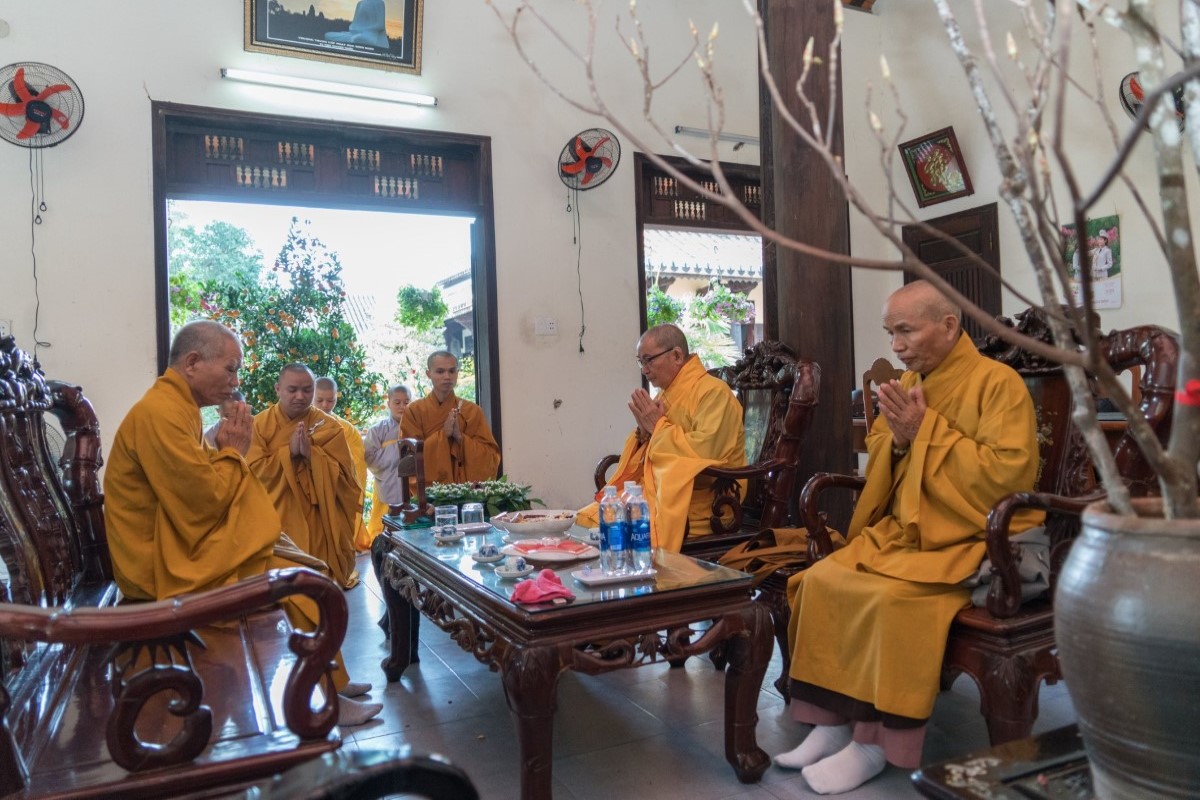
Discover the Legacy of Chuc Thanh Pagoda
Located just a short distance from the bustling streets of Hoi An, Chuc Thanh Pagoda is a hidden gem that holds the distinction of being the city’s oldest Buddhist temple. Founded in 1697 by Zen Master Minh Hai, this ancient pagoda has witnessed the evolution of both Buddhism and Hoi An itself, standing as a symbol of spiritual resilience and cultural continuity. Visitors to Chuc Thanh Pagoda often find themselves not just admiring its architecture but also connecting deeply with the spiritual energy that has been cultivated here for over 300 years.
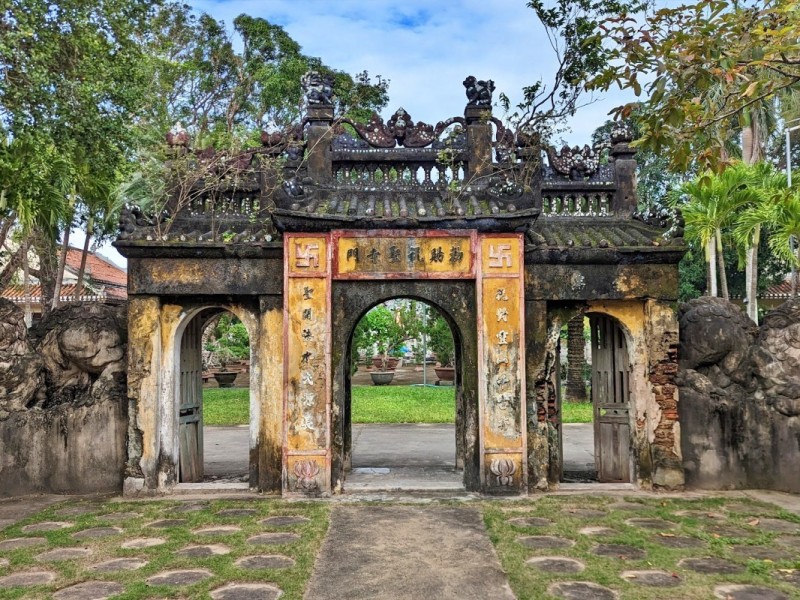
The Oldest Pagoda in Hoi An
As the oldest Buddhist temple in Hoi An, Chuc Thanh Pagoda stands as a timeless symbol of spiritual devotion and cultural heritage. Founded in the 17th century, it has witnessed the rise and fall of empires, the ebb and flow of history, and the continued reverence of locals and pilgrims alike. Its longevity and historical significance not only make it a place of worship but also a living testament to the spiritual resilience of the Vietnamese Buddhist community. Today, visitors can walk through its ancient halls and feel the centuries of faith that have shaped the identity of Hoi An.
Historical Importance and Cultural Significance
As the oldest Buddhist temple in Hoi An, Chuc Thanh Pagoda has been a beacon of Vietnamese Buddhism for centuries. Its founding marked the beginning of the Lam Te Chuc Thanh sect, which shaped the religious landscape of the region and beyond. The pagoda’s influence extends far beyond its physical boundaries, having played a critical role in spreading Buddhist teachings across Vietnam.
The cultural importance of Chuc Thanh Pagoda cannot be overstated. It served not only as a religious center but also as a place of refuge for spiritual seekers. Even today, the pagoda attracts visitors from around the world who come to immerse themselves in its history and experience the tranquility of this sacred site.
Founding by Zen Master Minh Hai
Zen Master Minh Hai, a revered figure in Vietnamese Buddhism, founded Chuc Thanh Pagoda in 1697 after being invited from China to Vietnam. His teachings laid the foundation for the Lam Te Chuc Thanh sect, which became a major force in Buddhism throughout Vietnam. Under his guidance, the pagoda became a center for learning, spiritual growth, and religious discourse. His legacy lives on through the rituals and practices still observed at the pagoda today.
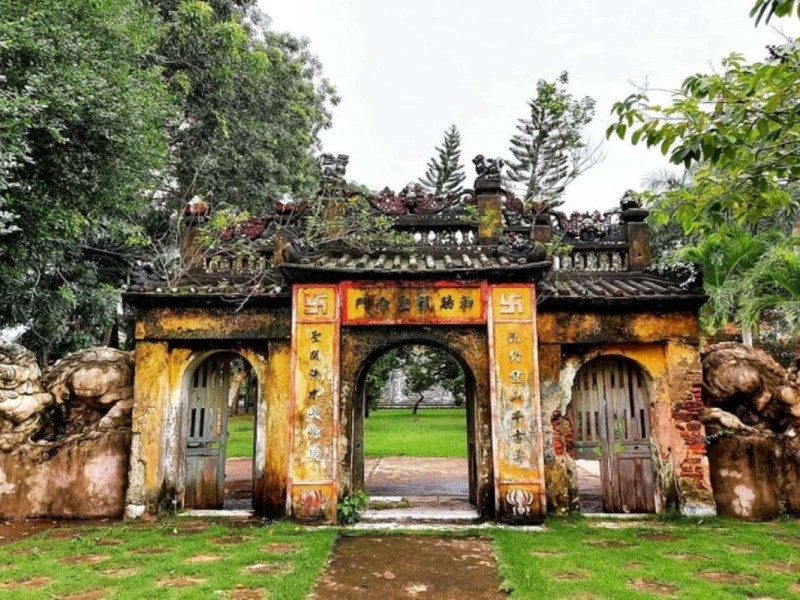
Buddhism’s Role in Hoi An
Buddhism has long been a cornerstone of Hoi An’s cultural and spiritual fabric, shaping the way of life for its people. Introduced by Zen Master Minh Hai and others, the spread of Buddhist teachings in the 17th century helped establish Chuc Thanh Pagoda as a center for spiritual learning and meditation. Over the years, this temple has played a pivotal role in embedding Buddhist principles of mindfulness, compassion, and enlightenment into the daily lives of the locals. Even today, Buddhism remains integral to the social and religious practices of Hoi An, drawing both residents and travelers who seek a deeper connection to these timeless teachings.
The Spread of Buddhism in Hoi An
During the 17th century, Hoi An was a thriving port city, attracting traders, scholars, and religious figures from around the world. It was within this cosmopolitan environment that Buddhism began to flourish, largely due to the efforts of Zen Master Minh Hai and his disciples. Chuc Thanh Pagoda became a focal point for the religious and cultural life of the city, influencing both its local residents and international visitors.
Today, Chuc Thanh Pagoda continues to be a spiritual anchor for the community, offering a place for meditation, reflection, and the practice of Buddhist teachings. Its significance in spreading Buddhism throughout Hoi An and beyond has cemented its status as a vital part of the city’s religious heritage.
The Teachings of Zen Master Minh Hai
Zen Master Minh Hai’s teachings emphasized the importance of mindfulness, meditation, and compassion—principles that continue to guide the practices at Chuc Thanh Pagoda today. His influence extended beyond the pagoda’s walls, shaping the spiritual lives of generations of Buddhists in Vietnam. Visitors to Chuc Thanh Pagoda can still feel the impact of his teachings in the rituals observed and the peaceful atmosphere that pervades the temple grounds.
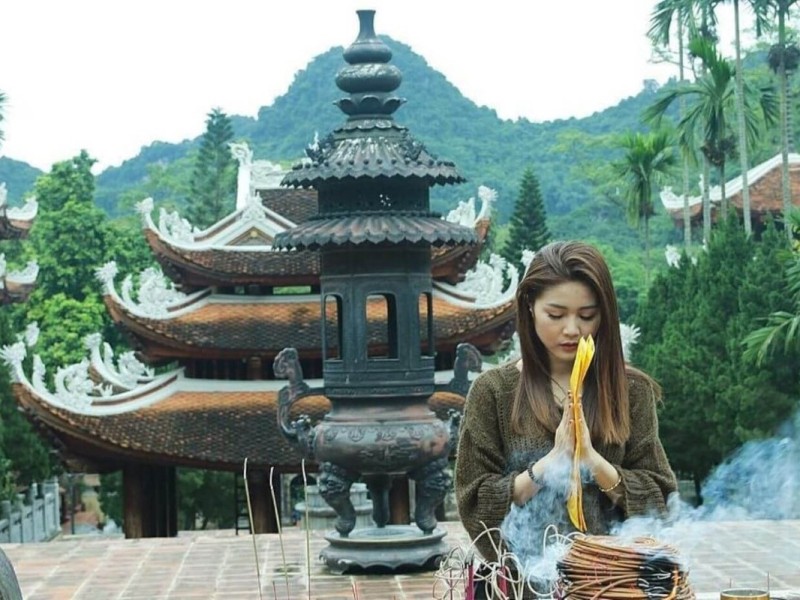
Legends and Stories Surrounding Chuc Thanh Pagoda
Every ancient site carries its legends, and Chuc Thanh Pagoda is no exception. From its founding by Zen Master Minh Hai to the many mystical stories that have surrounded the temple for centuries, these tales add a layer of enchantment to the historical significance of the pagoda. Some say the site was chosen after divine visions guided Minh Hai to this sacred ground. These stories, passed down through generations, continue to captivate the imagination of both locals and visitors, making Chuc Thanh Pagoda not just a site of worship but also a place where history and myth intertwine.
Mystical Legends of the Pagoda
Like many ancient religious sites, Chuc Thanh Pagoda is steeped in legends that add to its allure. One such legend speaks of how the Zen Master Minh Hai encountered divine visions that guided him to the site of the pagoda, which was chosen for its spiritual significance. These stories, passed down through generations, have helped preserve the mystical aura of the pagoda, attracting both the devout and the curious.
The Spiritual Energy of the Pagoda
Visitors to Chuc Thanh Pagoda often remark on the palpable sense of peace and spiritual energy that permeates the temple. This intangible quality has made the pagoda a favorite destination for those seeking a moment of calm amid their travels. Whether you’re meditating in its quiet corners or simply walking through its sacred spaces, the atmosphere of Chuc Thanh Pagoda offers a profound experience that lingers long after your visit.

Architectural Marvels of Chuc Thanh Pagoda
Chuc Thanh Pagoda isn’t just a spiritual sanctuary—it’s also a testament to Vietnamese artistry and architectural ingenuity. Designed in the traditional Tam style, the pagoda is a masterpiece of religious architecture, blending Vietnamese craftsmanship with elements of Chinese design. As you approach the Tam Quan Gate, the entrance’s ornate carvings immediately catch your eye, inviting you into the tranquil world of the pagoda’s courtyards and meditation halls.
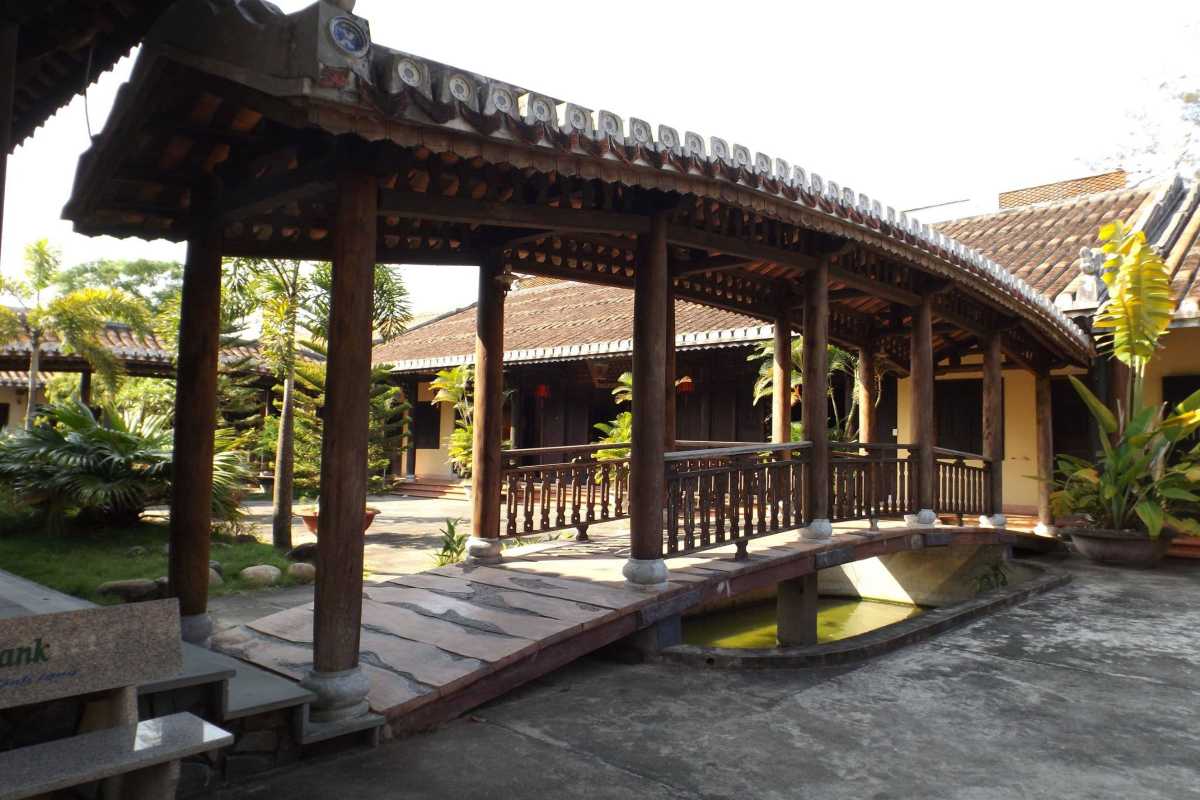
Traditional "Tam" Style Architecture
The design of Chuc Thanh Pagoda is a brilliant example of the traditional "Tam" style architecture that has been a hallmark of Vietnamese Buddhist temples for centuries. With its symmetrical layout, intricate carvings, and symbolic structures, the pagoda seamlessly blends artistry with spirituality. The grand Tam Quan Gate, decorated with carvings of dragons and phoenixes, symbolizes protection and harmony. Beyond the gate, the pagoda’s structure reflects the principles of Buddhist cosmology, with every detail, from the yin-yang roof tiles to the lotus motifs, serving as a reminder of the balance between the physical and spiritual realms.
Unique Elements in Pagoda Design
One of the defining features of Chuc Thanh Pagoda is its adherence to the traditional Tam style, characterized by its harmonious proportions and symmetrical layout. The Tam Quan Gate, which serves as the main entrance, is adorned with carvings of dragons and phoenixes—symbols of protection and power in Buddhist culture. Beyond the gate lies a peaceful courtyard where visitors can find ancient relics and an altar dedicated to Buddhist deities.
A Glimpse into Vietnamese Artistry
The pagoda’s architecture also showcases the talent of Vietnamese artisans, whose detailed sculptures and carvings reflect a blend of religious symbolism and cultural artistry. The intricate designs found throughout the pagoda—from the lotus motifs on the walls to the depictions of mythical creatures—are a visual testament to the skill and devotion of those who built this sacred space. Each element serves to enhance the spiritual atmosphere, making Chuc Thanh Pagoda both a place of worship and a work of art.

Spiritual Atmosphere and Serenity
For many visitors, the true beauty of Chuc Thanh Pagoda lies in its serene atmosphere, which offers a welcome retreat from the hustle and bustle of Hoi An. Whether you’re here to meditate, reflect, or simply soak in the peaceful surroundings, the pagoda provides an environment that nurtures both the body and the soul. Locals often visit for quiet contemplation, while tourists are drawn to the spiritual energy that seems to flow through every corner of the temple.
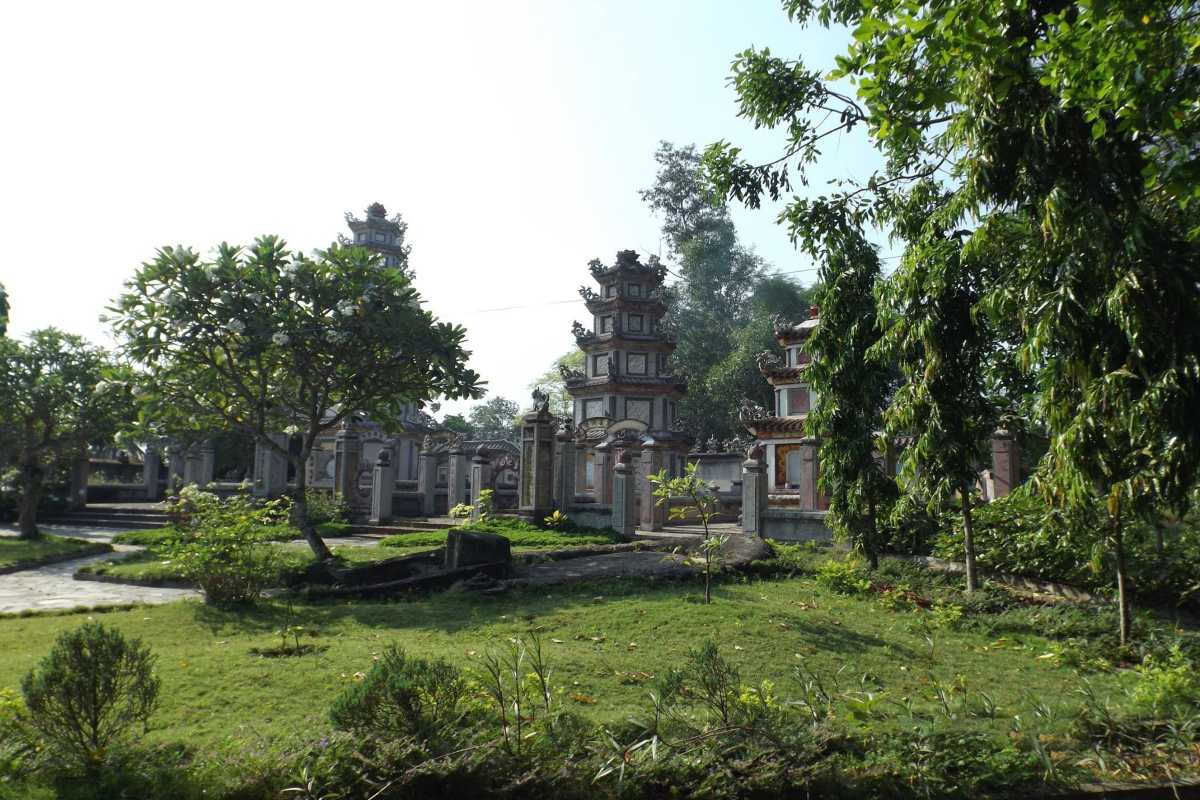
A Place for Quiet Reflection
In a world that often moves too quickly, Chuc Thanh Pagoda offers a serene retreat for those seeking peace and introspection. The calm courtyards, shaded by ancient trees, and the soft chimes of temple bells create an atmosphere that invites reflection and mindfulness. Whether you’re meditating in the temple’s tranquil spaces or simply taking a moment to breathe in the stillness, the pagoda provides a sacred environment where time seems to slow down. It’s no wonder that both locals and travelers are drawn here to escape the noise of daily life and reconnect with their inner selves.
Meditation Spaces at the Pagoda
The tranquil courtyards and meditation halls of Chuc Thanh Pagoda provide an ideal setting for those seeking a moment of calm. The pagoda’s design encourages quiet reflection, with peaceful nooks and crannies where visitors can sit and meditate. For those looking to deepen their practice, the pagoda also offers guided meditation sessions led by resident monks.
How Locals and Tourists Use the Space
Both locals and tourists visit Chuc Thanh Pagoda for various reasons—some come to pray, others to meditate, and many to simply experience the peaceful environment. The pagoda is not just a place of worship but also a space for spiritual growth, where visitors from all walks of life can find solace.
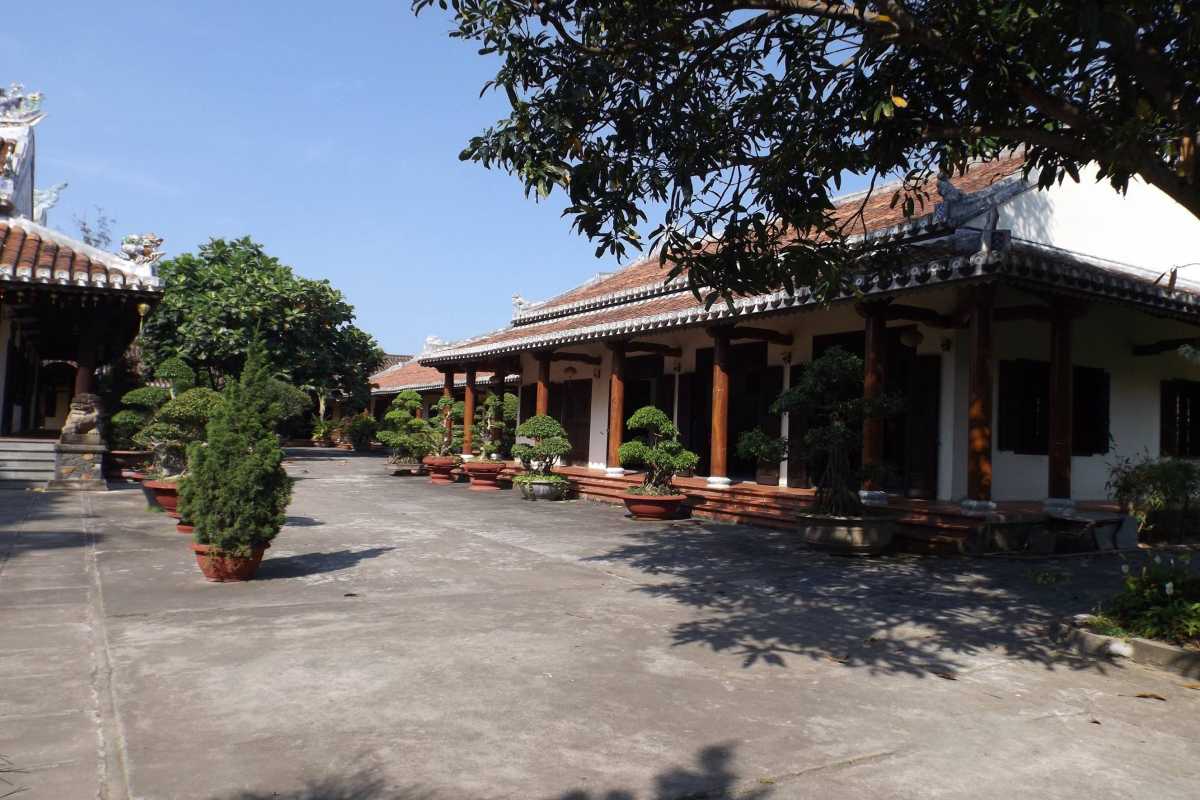
The Historical Journey of Chuc Thanh Pagoda
The history of Chuc Thanh Pagoda is deeply intertwined with the spread of Buddhism throughout Vietnam, making it a landmark of both religious and cultural significance. Over the centuries, the pagoda has evolved from a simple temple into a beacon of spiritual learning and meditation, drawing pilgrims and visitors alike. As one of the oldest Buddhist temples in the region, Chuc Thanh Pagoda has played a pivotal role in shaping the local Buddhist community, while also contributing to the broader spread of Buddhist teachings across Vietnam. Its historical journey reveals the temple’s resilience and its continued importance in the spiritual landscape of Hoi An.
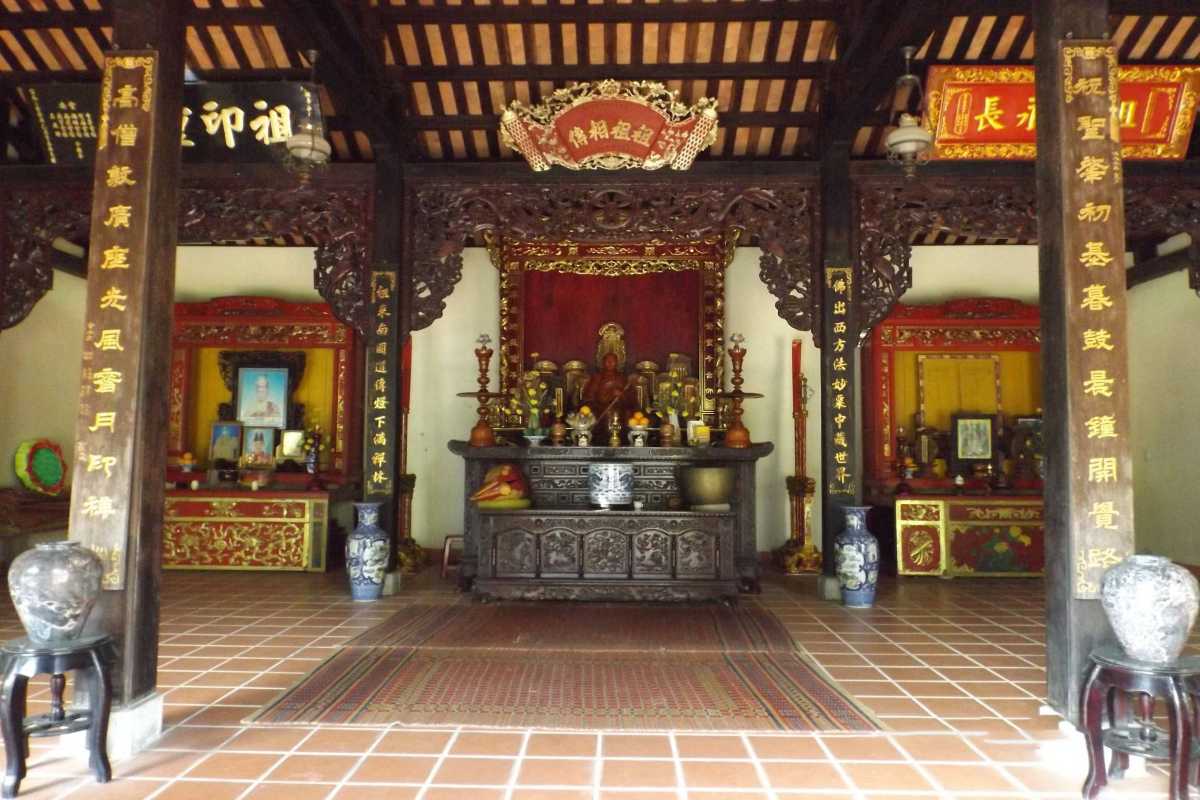
Zen Master Minh Hai’s Vision for Buddhism in Vietnam
Chuc Thanh Pagoda owes its spiritual foundation to Zen Master Minh Hai, whose vision for the spread of Buddhism was deeply rooted in the principles of mindfulness and compassion. His teachings helped establish the Lam Te Chuc Thanh sect, which has become one of the most influential branches of Buddhism in Vietnam. Minh Hai’s impact on the spiritual life of Hoi An is still felt today, as the temple continues to serve as a hub for religious discourse and Buddhist practice.
The Founding of the Lam Te Chuc Thanh Sect
The founding of the Lam Te Chuc Thanh sect marked a turning point in the development of Buddhism in Vietnam. Established by Zen Master Minh Hai, this sect introduced a unique blend of Zen and Vietnamese Buddhist traditions, fostering a spiritual movement that extended well beyond Hoi An. The sect became a beacon for those seeking a deeper understanding of Buddhism, and its teachings are still followed by many practitioners across the country and neighboring regions. Today, visitors to Chuc Thanh Pagoda can learn about the enduring influence of this sect on Vietnamese spirituality.
The Spread of Buddhism from Hoi An
Chuc Thanh Pagoda played a crucial role in the dissemination of Buddhist teachings from Hoi An to the rest of Vietnam. Thanks to the efforts of Zen Master Minh Hai and his disciples, the temple became a center of learning and religious exchange. As merchants, scholars, and religious figures passed through Hoi An, many were influenced by the teachings they encountered at Chuc Thanh Pagoda, helping to spread the practice of Buddhism across the region. Even today, the pagoda’s influence can be seen in the many temples and Buddhist communities throughout the country.
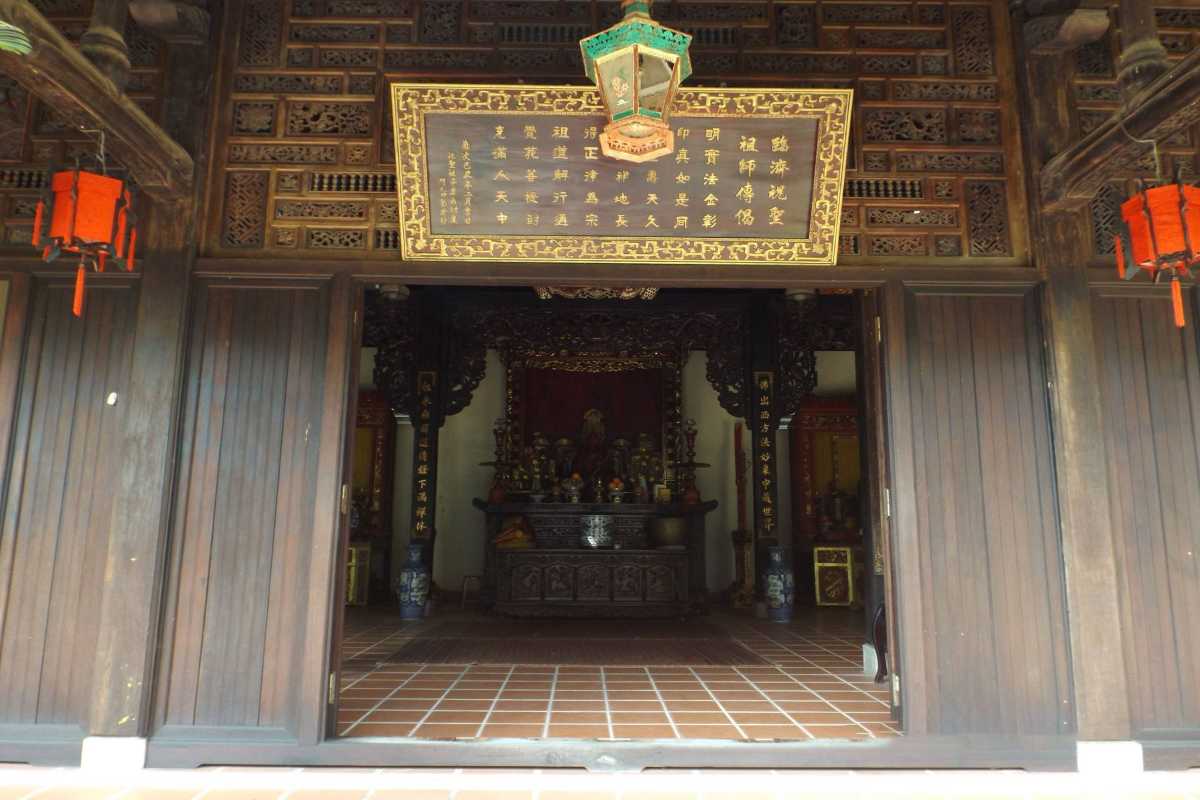
Detailed Architecture of Chuc Thanh Pagoda
The architectural design of Chuc Thanh Pagoda reflects the temple’s spiritual significance and the deep cultural traditions of Vietnamese Buddhism. Its layout, sculptures, and intricate carvings speak to the craftsmanship and devotion of the artisans who built it. The design is a blend of Vietnamese and Chinese influences, showcasing the connection between the two cultures. Each element of the temple’s architecture, from the towering Tam Quan Gate to the serene inner courtyard, has been carefully crafted to symbolize the path to spiritual enlightenment.
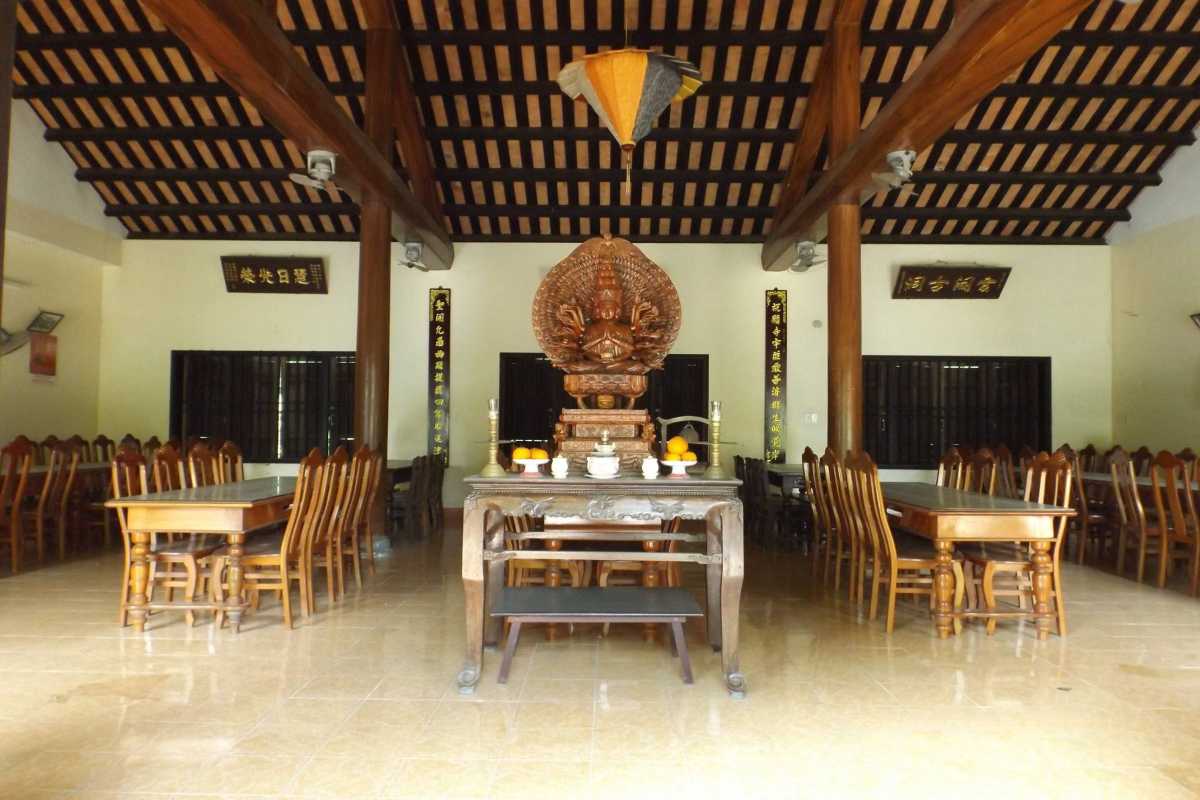
The Tam Quan Gate and Its Symbolism
The Tam Quan Gate serves as both the entrance to Chuc Thanh Pagoda and a powerful symbol of Buddhist teachings. Visitors stepping through this gate are metaphorically entering a sacred space, leaving behind the chaos of the outside world in search of peace and wisdom. The gate’s design is not only functional but deeply symbolic, representing the three paths of liberation in Buddhism: emptiness, formlessness, and detachment.
Cultural Significance of the Gate Design
The Tam Quan Gate is more than just an entrance—it represents the philosophical and spiritual concepts central to Buddhist practice. Each of the gate’s three entrances symbolizes a different path to enlightenment, reminding visitors of the importance of reflection and mindfulness. Adorned with carvings of Buddhist symbols, the gate invites worshippers to pause and consider their spiritual journey before entering the temple grounds.
Decorative Elements on the Gate
The Tam Quan Gate is decorated with intricate sculptures of lions, flowers, and Buddhist motifs. These artistic details are not only aesthetically pleasing but also serve as protective symbols, warding off negative energy and ensuring the safety of those who pass through. The lion sculptures, in particular, represent strength and protection, while the floral motifs symbolize the impermanence of life—a core concept in Buddhism.
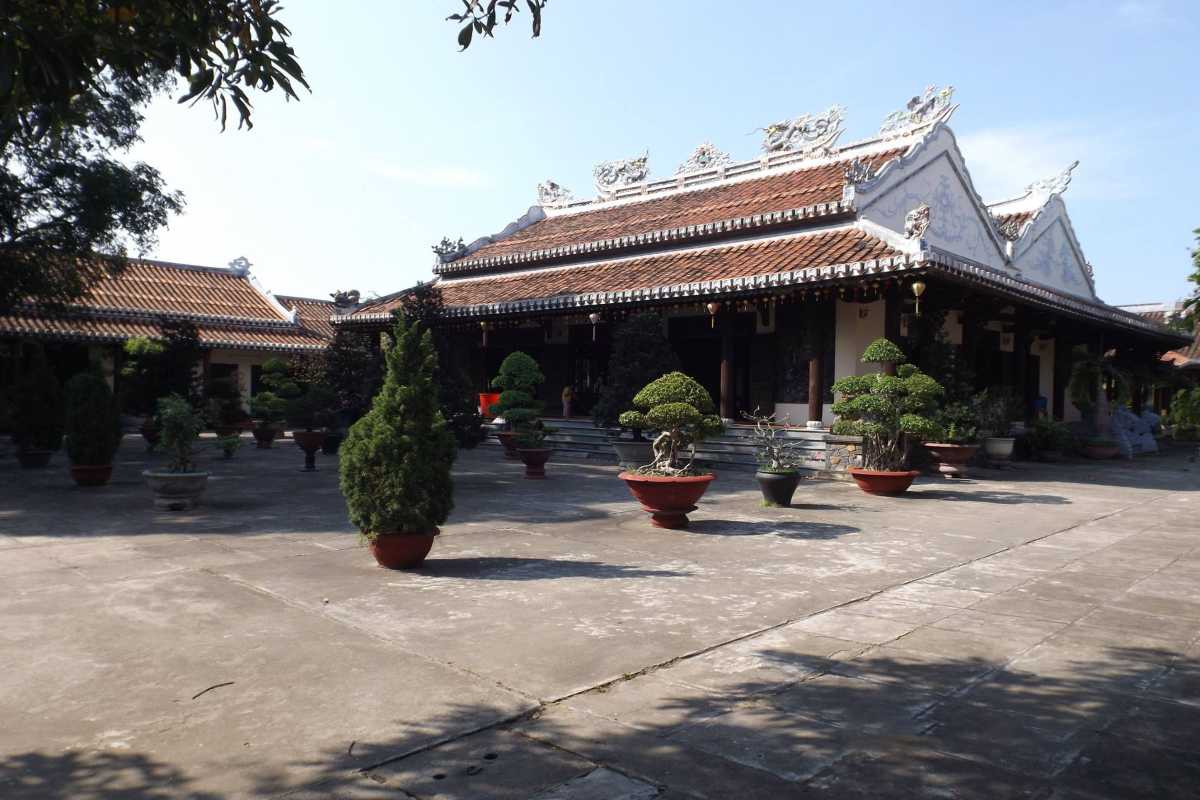
Intricate Carvings and Symbols Throughout the Pagoda
The attention to detail in the carvings and symbols found throughout Chuc Thanh Pagoda reflects the deep spirituality of the site. Every design element carries meaning, serving as a visual representation of Buddhist teachings. From the ornate depictions of dragons and phoenixes to the delicate lotus flowers, these carvings invite contemplation and awe.
Dragon and Phoenix Carvings
The dragon and phoenix are important symbols in Buddhist culture, representing balance, harmony, and the union of opposites. At Chuc Thanh Pagoda, these creatures are beautifully depicted in carvings that adorn the walls and altars, adding to the temple’s spiritual ambiance. The dragon, a symbol of power and protection, contrasts with the phoenix, which represents renewal and rebirth—together, they embody the balance that is central to Buddhism.
The Symbolism of the Yin-Yang Tiles
The yin-yang tiles that decorate the roof of Chuc Thanh Pagoda are a powerful reminder of the balance between opposites that is central to Buddhist philosophy. These tiles not only protect the temple from the elements but also symbolize the interconnectedness of life, death, and rebirth. Their presence adds another layer of meaning to the temple’s design, encouraging visitors to reflect on the cycles of existence.
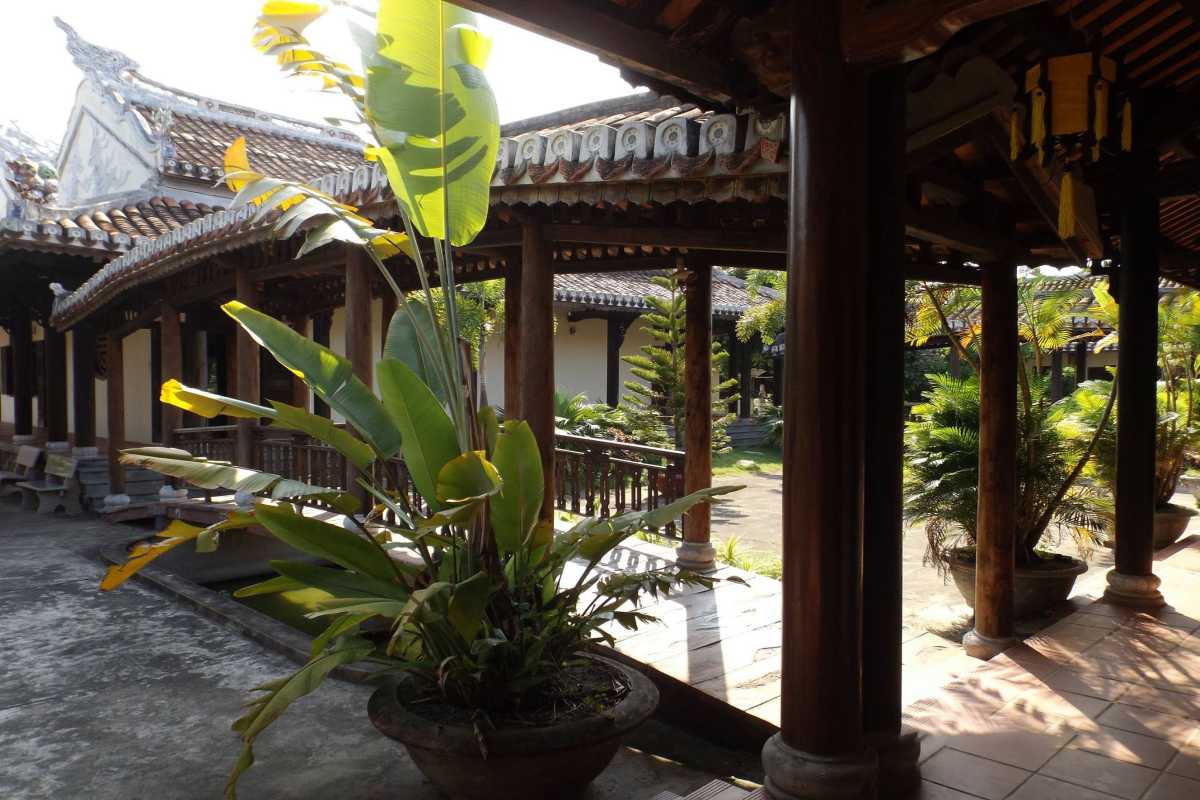
Religious Rituals and Ceremonies at Chuc Thanh Pagoda
Religious ceremonies at Chuc Thanh Pagoda are steeped in tradition, offering visitors the chance to witness the spiritual practices that have been carried out for centuries. These ceremonies are an essential part of the temple’s identity, helping to preserve Buddhist rituals and teachings for future generations. For those fortunate enough to attend, the rituals at Chuc Thanh Pagoda offer a glimpse into the sacred customs of Vietnamese Buddhism.
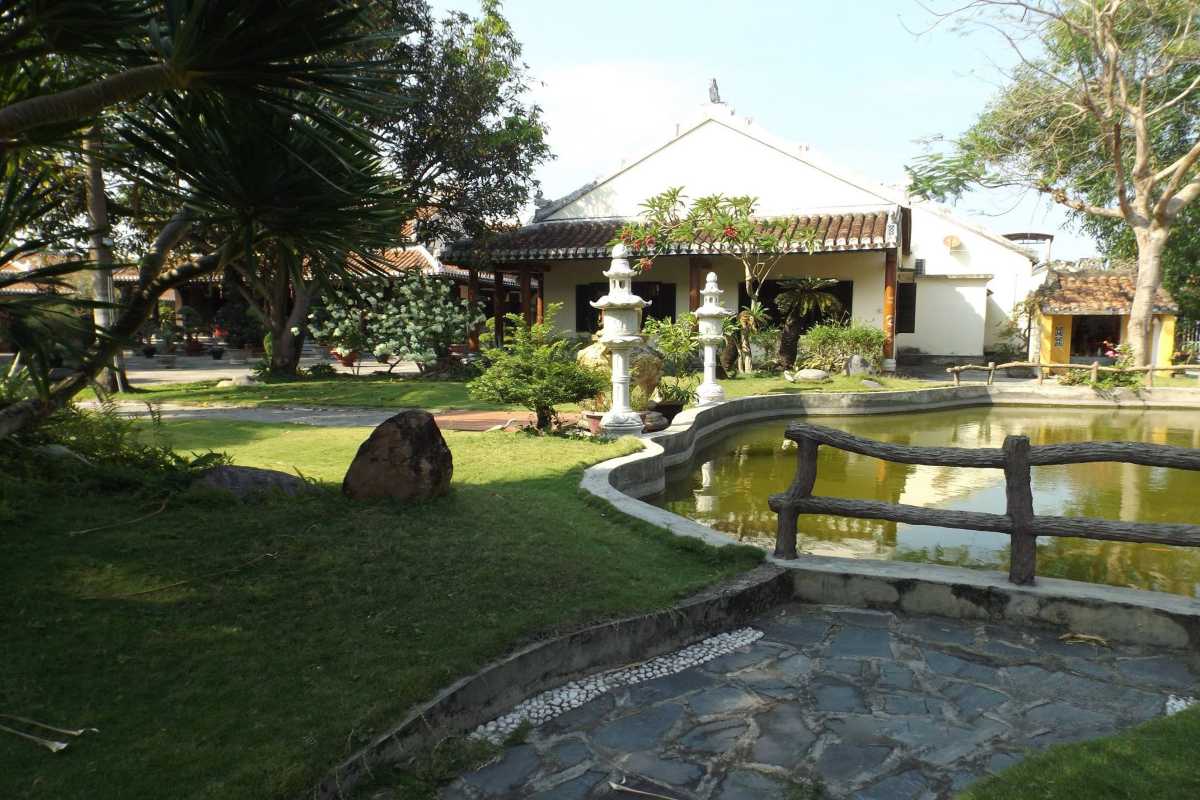
Annual Ceremonies to Honor Zen Master Minh Hai
One of the most significant events at Chuc Thanh Pagoda is the annual ceremony held to honor Zen Master Minh Hai, the temple’s revered founder. This ceremony draws Buddhists from across the region, who gather to pay their respects and participate in the ritual observances that commemorate the life and teachings of Minh Hai.
The November 7th Ritual and Its Meaning
Each year on November 7th, Chuc Thanh Pagoda holds a solemn ceremony to honor the memory of Zen Master Minh Hai. This event is not only a time of reflection for the local Buddhist community but also an opportunity for pilgrims from around the country to come together in spiritual unity. The ritual includes prayers, chanting, and offerings, all performed to express gratitude for the teachings of Minh Hai and to seek his continued guidance.
Father’s Day Feast – A Rare Spiritual Gathering
Once every three years, Chuc Thanh Pagoda hosts the Father’s Day Feast, a unique event that brings together monks and laypeople for a day of spiritual reflection and communal bonding. This rare gathering serves as a reminder of the importance of familial and spiritual ties, reinforcing the core values of Buddhism. Attending the Father’s Day Feast provides visitors with a deeper understanding of the role of community in Buddhist practice.
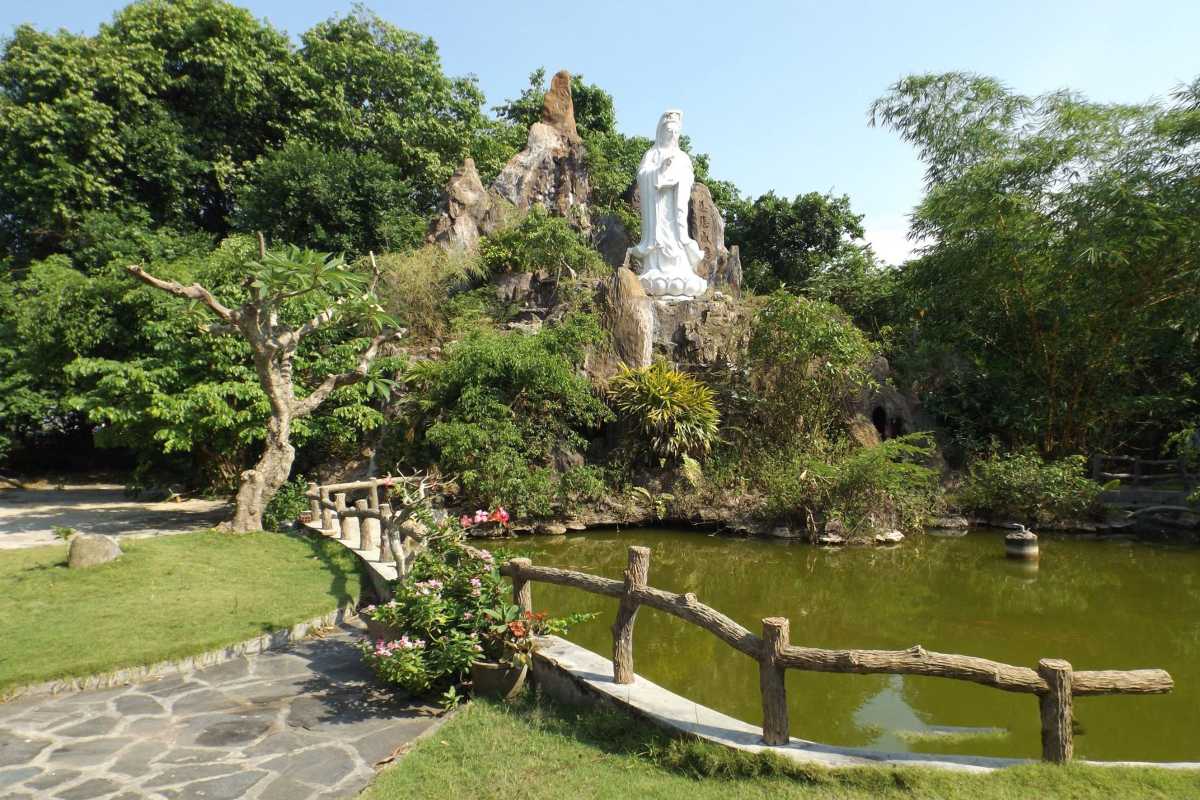
Special Buddhist Rituals and Their Cultural Significance
Beyond the annual ceremonies, Chuc Thanh Pagoda is home to many other Buddhist rituals that reflect the temple’s role in preserving Vietnamese spiritual culture. These rituals, which include daily prayers and offerings, allow visitors to observe or participate in the sacred practices that form the foundation of Buddhist life.
The Role of Rituals in Vietnamese Buddhism
Buddhist rituals play a central role in the daily life of the temple, serving as a means of connecting the faithful with their spiritual beliefs. At Chuc Thanh Pagoda, these rituals are an expression of devotion, allowing monks and laypeople alike to reaffirm their commitment to the teachings of Buddha. For visitors, witnessing these rituals provides an intimate look into the spiritual life of the community.
When to Experience These Ceremonies as a Traveler
Travelers visiting Chuc Thanh Pagoda can plan their trip around key Buddhist holidays or annual ceremonies to experience the temple’s rituals firsthand. Visiting during these events allows for a deeper connection with the Buddhist practices that define the temple’s spiritual essence. Early mornings or late afternoons are ideal for those seeking a more tranquil experience, while attending special ceremonies can offer a more immersive glimpse into Vietnamese Buddhism.
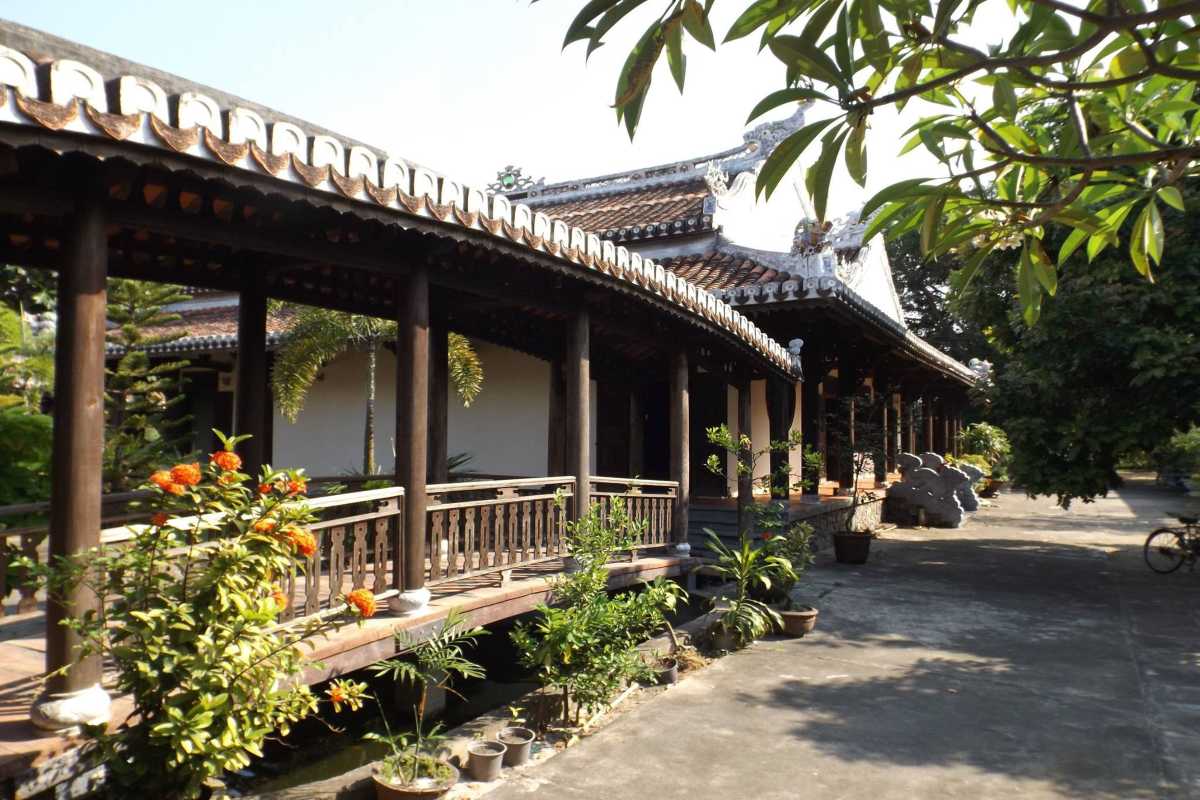
How to Visit Chuc Thanh Pagoda
Chuc Thanh Pagoda is easily accessible from the heart of Hoi An, making it a convenient stop for both locals and tourists. Whether you’re looking to explore its spiritual heritage or simply enjoy a moment of peace, visiting the pagoda is an enriching experience that offers both cultural and personal rewards.
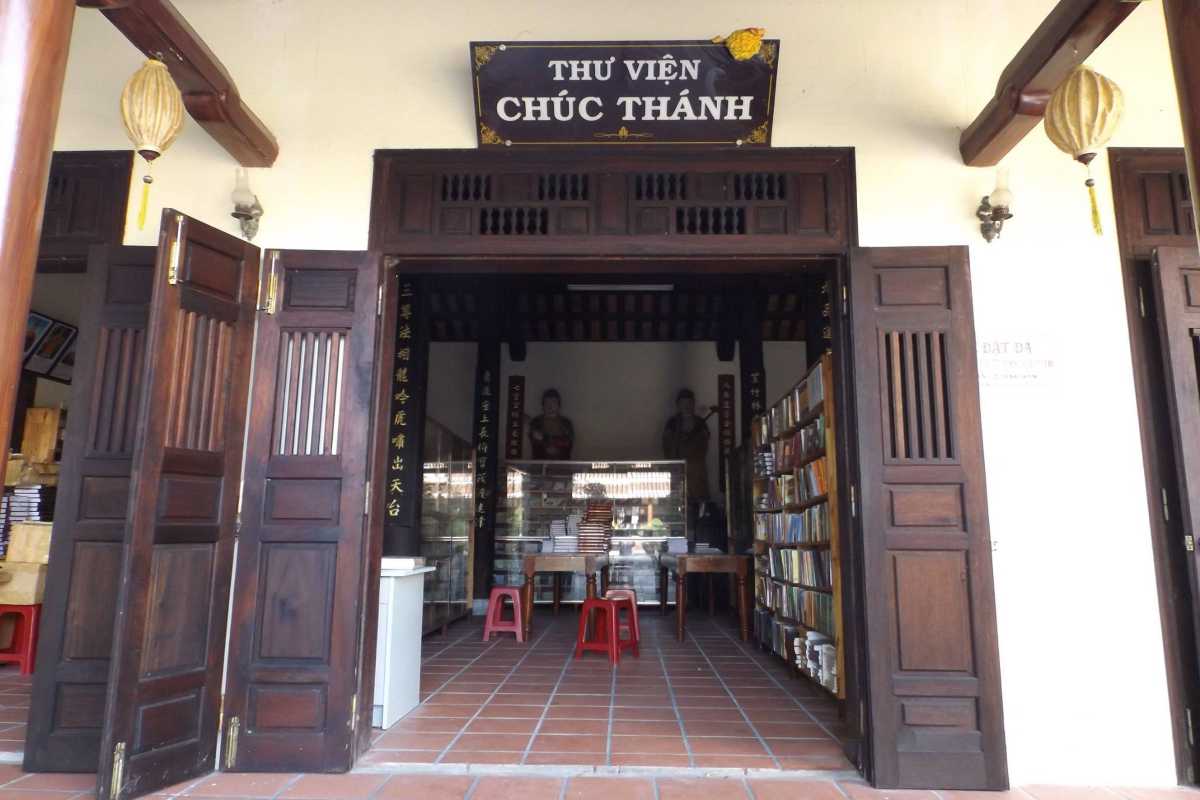
Location and Accessibility
Located just a short distance from the bustling streets of Hoi An Ancient Town, Chuc Thanh Pagoda is easily reachable by foot, bike, or taxi. The journey to the temple offers a glimpse of the tranquil outskirts of the city, providing a peaceful transition from the lively urban center to the serene temple grounds.
How to Get There from Hoi An Ancient Town
From Hoi An Ancient Town, visitors can take a leisurely walk or bike ride to Chuc Thanh Pagoda, enjoying the scenic surroundings along the way. For those who prefer a quicker option, taxis and motorbike rentals are readily available. The temple’s proximity to the town center makes it a convenient destination for travelers seeking a spiritual retreat without venturing far from their accommodation.
Best Times to Visit for a Tranquil Experience
For a more peaceful experience, it’s best to visit Chuc Thanh Pagoda early in the morning or later in the afternoon, when the temple is less crowded. These quieter times allow visitors to fully appreciate the tranquil atmosphere of the temple and reflect in its serene surroundings.

Why You Should Visit Chuc Thanh Pagoda
For travelers in search of spiritual tranquility and a connection to Vietnam’s rich Buddhist history, Chuc Thanh Pagoda is a must-visit destination. This sacred site is more than just a historical landmark; it is a place where you can experience the essence of Buddhist teachings firsthand. The peaceful ambiance of the temple, combined with its stunning Vietnamese architecture and centuries-old rituals, offers visitors a unique chance to step away from the fast pace of daily life and reconnect with something deeper.
Imagine walking through the ancient Tam Quan Gate, feeling the weight of history and the presence of centuries of devotion. The combination of quiet reflection, beautiful surroundings, and a sense of spiritual renewal is something that makes Chuc Thanh Pagoda stand out among other attractions in Hoi An. Whether you are on a spiritual journey or simply looking for a peaceful retreat, this pagoda provides an experience that will stay with you long after you leave.
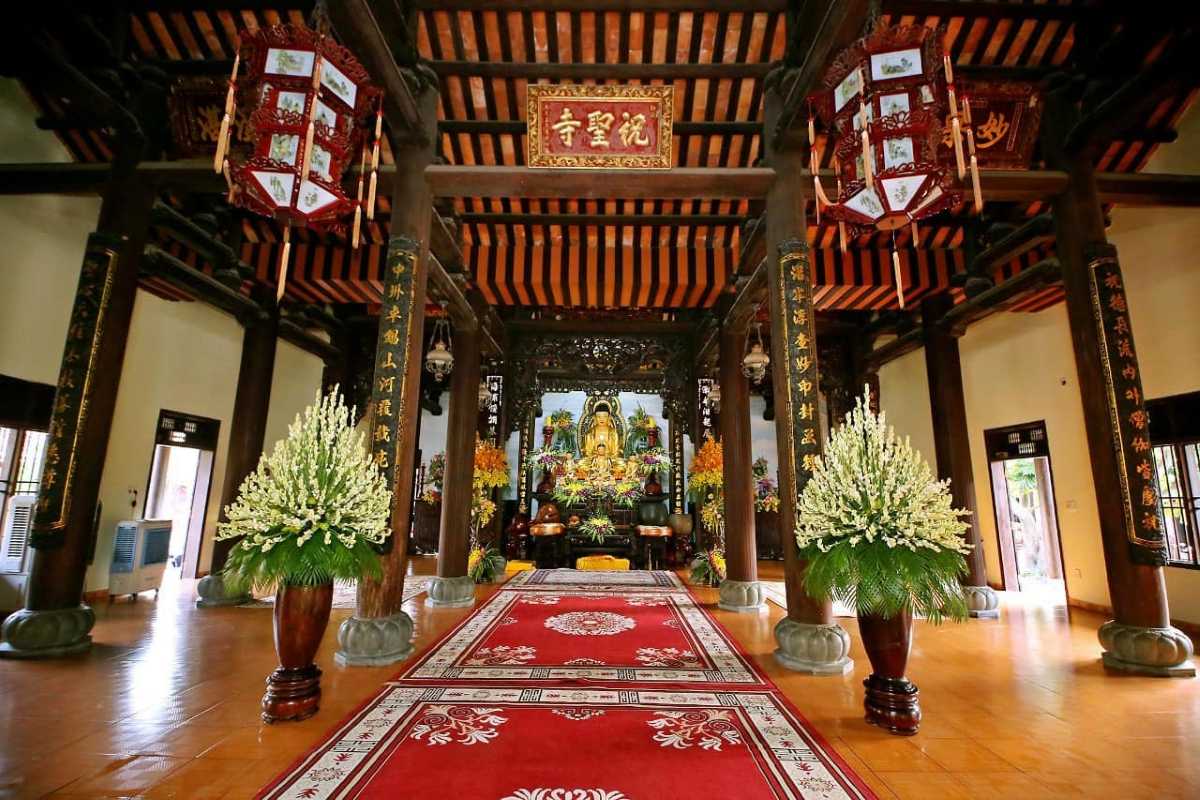
Experiencing the Spiritual Energy
The spiritual energy at Chuc Thanh Pagoda is palpable, and visitors often describe the temple as a place of calm and inner peace. It is easy to feel a connection to something greater when surrounded by such beauty and serenity. For centuries, people have come to this sacred site to meditate, reflect, and find solace in the teachings of Buddhism. The atmosphere at the pagoda invites you to slow down, breathe deeply, and engage in a moment of introspection.
Emotional and Spiritual Benefits of Visiting
Visiting Chuc Thanh Pagoda is not just about exploring a historical monument; it’s an opportunity to nourish your soul. The temple’s serene environment allows for moments of personal reflection, where you can focus on inner peace and spiritual renewal. Whether you’re seeking a spiritual awakening or simply a break from the bustling streets of Hoi An, Chuc Thanh Pagoda offers a space where you can connect with yourself and the tranquil energy that surrounds you. For many visitors, this spiritual experience is the highlight of their trip, leaving them with a profound sense of calm and clarity.
A Place for Personal Reflection
The quiet corners and meditation spaces within Chuc Thanh Pagoda provide an ideal environment for personal reflection. Surrounded by the beauty of nature and the artistry of the pagoda’s architecture, visitors can take time to contemplate life’s deeper meanings. Whether you sit in silent meditation or stroll through the peaceful courtyards, you’ll find that the pagoda offers a rare chance to escape the distractions of modern life and reconnect with your inner self. For solo travelers, in particular, this can be an incredibly enriching experience, allowing for moments of introspection and spiritual discovery.
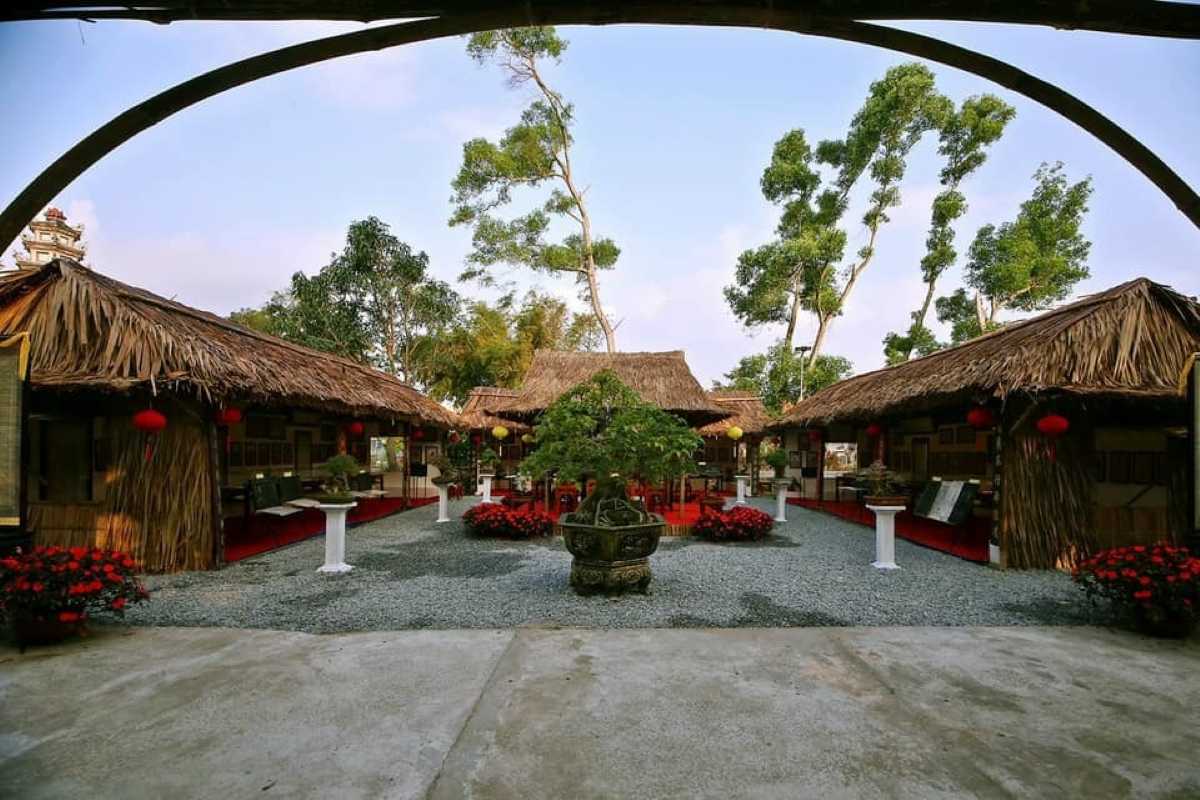
Unique Experiences for Every Type of Traveler
Chuc Thanh Pagoda has something to offer for every type of traveler, whether you’re visiting with family, as a couple, or on a solo journey of self-discovery. The pagoda’s spiritual energy and serene atmosphere make it an ideal destination for those seeking both cultural enrichment and personal peace. Visitors of all ages can find meaning and beauty in the temple’s teachings, architecture, and rituals, making it a versatile and deeply rewarding experience.
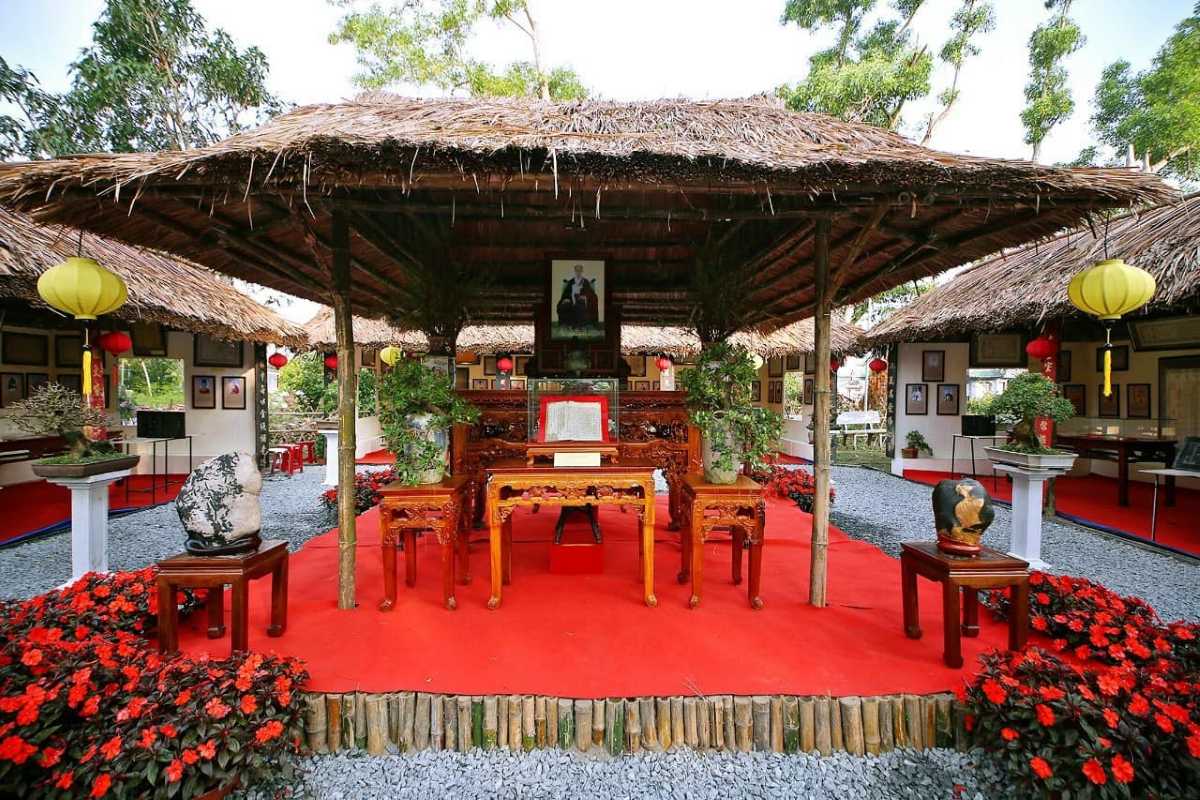
Family-Friendly Activities
Families visiting Chuc Thanh Pagoda will find plenty of opportunities to engage children in the cultural and spiritual traditions of Vietnamese Buddhism. From exploring the temple’s intricate carvings to learning about the importance of Buddhist rituals, a visit to the pagoda can be both educational and inspiring for younger visitors. Parents can use the experience to introduce their children to Buddhist teachings in a way that is accessible and enriching.
Engaging Your Children in Buddhist Culture Chuc Thanh Pagoda provides a family-friendly environment where children can learn about Vietnamese Buddhism in an interactive way. Walking through the temple’s beautiful courtyards and admiring its detailed carvings can spark curiosity in young minds. Parents can explain the significance of the dragon and phoenix carvings, the meaning of the yin-yang tiles, and the importance of the Buddhist rituals performed at the temple. This educational aspect of the visit helps children connect with the local culture in a meaningful and engaging way.
Cultural Lessons for Young Visitors The guided tours available at Chuc Thanh Pagoda are an excellent way for families to delve deeper into the cultural and spiritual heritage of Vietnamese Buddhism. These tours provide valuable insights into the temple’s history, architecture, and religious significance, making it easier for children to grasp the importance of the site. By learning about the teachings of Zen Master Minh Hai and the role of Chuc Thanh Pagoda in the spread of Buddhism, young visitors can gain a new appreciation for the cultural depth of Vietnam.
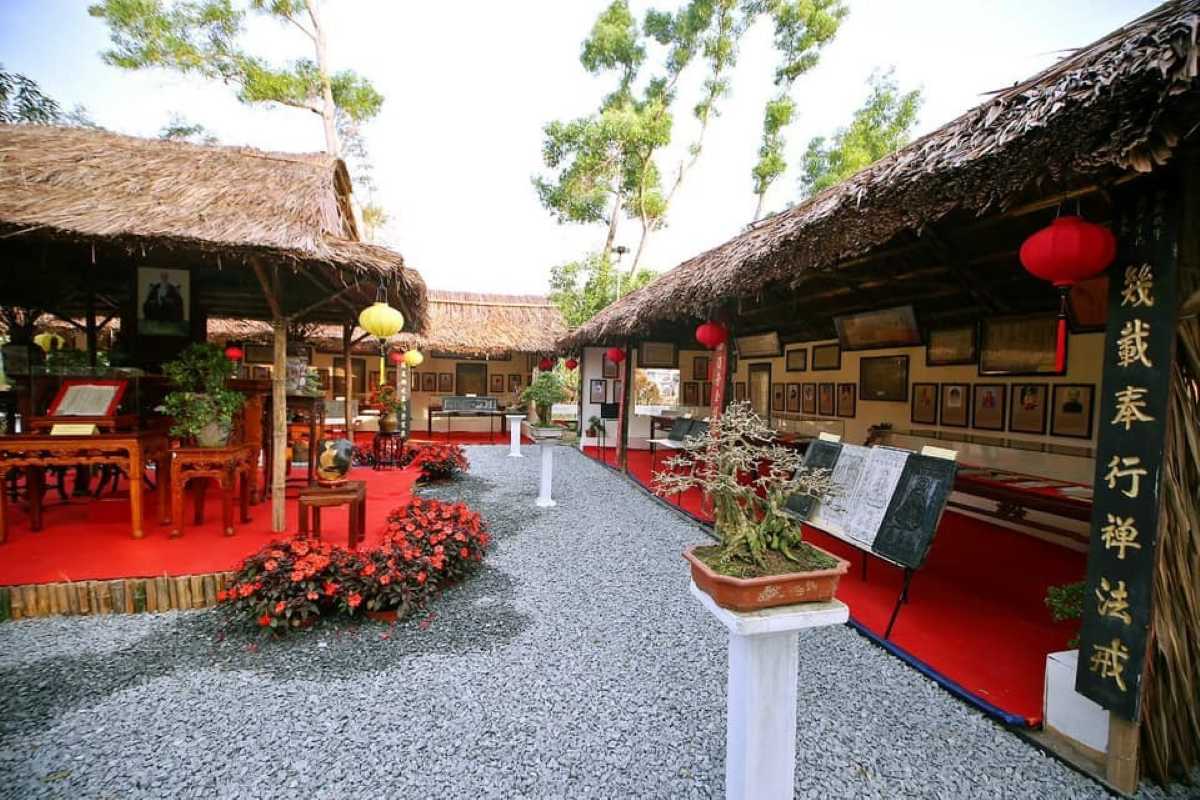
Romantic and Solo Traveler Experiences
For couples and solo travelers alike, Chuc Thanh Pagoda offers a unique experience that combines spiritual reflection with the beauty of nature and architecture. The temple’s tranquil atmosphere provides a romantic backdrop for couples seeking a peaceful retreat, while solo travelers can use the space for meditation and personal growth.
Romantic Escapes for Couples Couples visiting Chuc Thanh Pagoda will find the temple’s serene ambiance to be the perfect setting for a romantic escape. Whether strolling hand-in-hand through the pagoda’s peaceful gardens or sharing a quiet moment of reflection by the temple’s altar, the calm surroundings offer a chance to connect with each other in a deeply meaningful way. The spiritual energy of the pagoda provides a sense of harmony and tranquility, making it an ideal destination for couples looking to experience something beyond the typical tourist attractions.
Solo Traveler’s Spiritual Journey For solo travelers, a visit to Chuc Thanh Pagoda can be an incredibly transformative experience. The temple’s peaceful environment allows for uninterrupted moments of meditation and self-reflection, making it the perfect place for personal growth. Many solo travelers find that the time spent at Chuc Thanh Pagoda provides them with a deeper understanding of Buddhist philosophy, as well as a renewed sense of clarity and purpose. Whether you’re seeking spiritual insight or simply a quiet place to reflect, the pagoda offers a sanctuary for those on a personal journey of discovery.

Plan Your Visit to Chuc Thanh Pagoda Today
If you’re ready to experience the deep spiritual essence of Chuc Thanh Pagoda for yourself, planning your visit is the next step. This peaceful sanctuary offers a glimpse into Vietnam’s Buddhist heritage, and with proper planning, you can make the most of your journey. From practical travel tips to booking guided tours and attending special ceremonies, there’s much to consider. Whether you’re looking for a quiet retreat or a more immersive experience with local culture, this guide will help you prepare for a meaningful visit to Hoi An’s oldest Buddhist temple.

Practical Tips for Your Journey
Before setting out to explore Chuc Thanh Pagoda, it’s essential to prepare for a comfortable and fulfilling visit. The serene atmosphere and sacred significance of the pagoda call for mindfulness in your planning, ensuring you respect both the site and your personal experience.
What to Bring for a Comfortable Visit When visiting Chuc Thanh Pagoda, it’s important to come prepared for a peaceful experience. Pack a bottle of water to stay hydrated as you explore the grounds, especially during the warmer months. Comfortable walking shoes are also recommended as you’ll likely spend time meandering through the temple’s courtyards and paths. Additionally, modest clothing is required to show respect for the sacred space; ensure your shoulders and knees are covered. A small offering for the temple, such as flowers or incense, is also a thoughtful gesture that aligns with the local customs of Buddhist temples in Vietnam.
How to Avoid Crowds To truly experience the tranquility of Chuc Thanh Pagoda, it’s best to visit during the quieter hours. Early morning or late afternoon visits provide a more serene atmosphere, allowing you to appreciate the temple’s spiritual energy without large crowds. The best months to visit are during the off-peak seasons, typically from September to November, when both the weather and the number of tourists are more manageable. This will ensure a more intimate experience, where you can fully immerse yourself in the peaceful surroundings of this ancient Buddhist temple.

Booking Guided Tours and Ceremonies
For those who wish to delve deeper into the history and spiritual significance of Chuc Thanh Pagoda, booking a guided tour or attending a religious ceremony can enhance your visit. These experiences offer unique insights into Vietnamese Buddhism, allowing you to connect more deeply with the teachings and traditions upheld at the temple.

Schedule a Tour of Chuc Thanh Pagoda
Guided tours of Chuc Thanh Pagoda provide a detailed exploration of the temple’s history, architecture, and Buddhist rituals. Whether you’re visiting with family, as a solo traveler, or as part of a couple’s getaway, there’s a tour package that can cater to your needs.
Available Tour Packages There are several tour options available for visitors to Chuc Thanh Pagoda, ranging from short, one-hour tours that cover the highlights to more in-depth tours that include a walk through the temple’s peaceful courtyards and meditation areas. Families can opt for tours that focus on the educational aspects of Buddhist culture, engaging children with stories and symbols found throughout the pagoda. Solo travelers may prefer tours that emphasize reflection and meditation, while couples can enjoy romantic sunset tours, offering a serene experience to share together.
How to Book a Meditation Retreat For those seeking a more immersive spiritual experience, Chuc Thanh Pagoda offers meditation retreats led by the resident monks. These retreats allow visitors to practice mindfulness and meditation in a truly sacred environment, surrounded by centuries of Buddhist wisdom. Booking a retreat can be done through local travel agencies in Hoi An or directly with the pagoda. It’s recommended to book in advance, especially during the busier tourist seasons, to ensure your spot in this transformative experience.

Visit the Cultural Heart of Hoi An
Your visit to Chuc Thanh Pagoda can easily be integrated into a broader cultural exploration of Hoi An. The pagoda’s location makes it a convenient stop on a tour of the city’s most significant religious and historical sites, giving you the chance to dive deeper into the rich traditions of the area.

Other Sites to Explore Nearby
After experiencing the peaceful ambiance of Chuc Thanh Pagoda, consider exploring some of Hoi An’s other cultural gems. The town is brimming with ancient pagodas, temples, and historical buildings that offer a glimpse into Vietnam’s past.
Connecting Chuc Thanh Pagoda with Your Hoi An Itinerary Chuc Thanh Pagoda can be seamlessly added to any Hoi An itinerary, especially for those interested in religious history and architecture. Pair your visit with a stop at the Japanese Covered Bridge or the Fujian Assembly Hall to explore other iconic landmarks of the city. This combination of sites will offer a comprehensive understanding of the spiritual and cultural significance of Hoi An, making your trip all the more memorable. For a full day of exploration, consider visiting the Tra Que Vegetable Village in the morning, followed by an afternoon at Chuc Thanh Pagoda for peaceful reflection.

A Journey Through Time and Spirit—Make Your Visit to Chuc Thanh Pagoda Unforgettable
Chuc Thanh Pagoda is more than a historical site; it’s a place where time seems to stand still, allowing you to connect with centuries of spiritual devotion. Whether you’re drawn to the temple’s stunning Vietnamese architecture, its quiet spaces for meditation, or the opportunity to participate in a sacred ceremony, the experience of visiting Chuc Thanh Pagoda is one that will resonate long after you leave.
By planning your visit carefully, you can fully immerse yourself in the spiritual and cultural offerings of this ancient Buddhist temple. Explore its tranquil courtyards, attend a guided tour or ceremony, and take the time to reflect in the sacred atmosphere. Each moment spent here is an opportunity to connect with the spiritual heart of Hoi An, leaving you with lasting memories and a deeper understanding of Vietnamese Buddhism. Now is the perfect time to visit—book your tour or retreat today and embark on a journey that blends history, spirituality, and personal peace.
Nguyễn Việt Hưng
Faqs
Chuc Thanh Pagoda is the oldest Buddhist temple in Hoi An, founded in 1697 by Zen Master Minh Hai. It holds deep historical significance as a center for the spread of Buddhism in the region and the founding place of the Lam Te Chuc Thanh sect. The pagoda symbolizes centuries of spiritual resilience and cultural heritage in Hoi An.
- It has served as a sanctuary for religious learning and meditation for over 300 years.
- The temple played a pivotal role in shaping Vietnamese Buddhism locally and nationally.
- Its architecture reflects a blend of Vietnamese and Chinese spiritual artistry.
- The pagoda remains a vital spiritual and cultural landmark for locals and visitors alike.
Visiting Chuc Thanh Pagoda offers a unique connection to Vietnam’s rich Buddhist traditions and centuries-old spiritual history.
Chuc Thanh Pagoda is located about 1.5 kilometers from Hoi An Ancient Town and is easily reachable by foot, bicycle, taxi, or cyclo. The journey offers a peaceful transition from the busy town center to the serene temple grounds.
- Walking or cycling takes approximately 15-20 minutes and allows you to enjoy the scenic outskirts.
- Taxis and motorbike taxis provide quick and convenient access.
- The route is well-marked and safe for pedestrians and cyclists.
- Local guides or tour operators can assist with transport arrangements.
Plan your visit to include a relaxing trip from Hoi An Ancient Town to fully experience the tranquil surroundings of the pagoda.
The best times to visit Chuc Thanh Pagoda for tranquility are early mornings or late afternoons on weekdays when visitor numbers are lower. Visiting during the off-peak tourist season, typically from September to November, also ensures a more intimate experience.
- Early morning visits capture the quiet ambiance before crowds arrive.
- Late afternoons offer soft natural lighting and peaceful meditation spaces.
- Avoid weekends and major holidays to escape heavy visitor traffic.
- Consider attending during Buddhist ceremonies for a deeper spiritual experience.
Choosing the right time enhances your ability to connect with the serene spiritual energy of Chuc Thanh Pagoda.
Visiting Chuc Thanh Pagoda is generally free of charge, as it is an active place of worship. However, donations or small offerings are appreciated to support temple upkeep and local monks.
- There is no formal ticket or entrance fee.
- Visitors are encouraged to contribute respectfully if they wish.
- Special events or guided tours may have associated fees.
- Donations help preserve the pagoda’s historic and cultural legacy.
Enjoy your visit knowing that access to this sacred site is open to all seeking spiritual connection.



